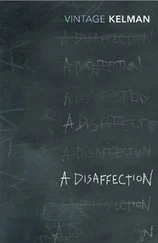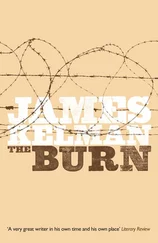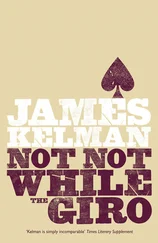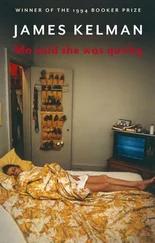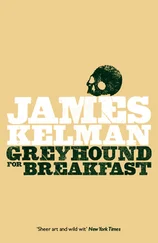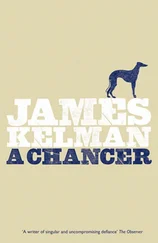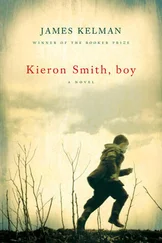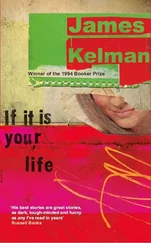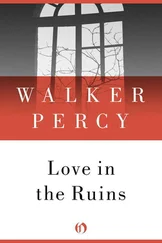James Kelman - An Old Pub Near the Angel
Здесь есть возможность читать онлайн «James Kelman - An Old Pub Near the Angel» весь текст электронной книги совершенно бесплатно (целиком полную версию без сокращений). В некоторых случаях можно слушать аудио, скачать через торрент в формате fb2 и присутствует краткое содержание. Издательство: Birlinn Ltd, Жанр: Современная проза, на английском языке. Описание произведения, (предисловие) а так же отзывы посетителей доступны на портале библиотеки ЛибКат.
- Название:An Old Pub Near the Angel
- Автор:
- Издательство:Birlinn Ltd
- Жанр:
- Год:неизвестен
- ISBN:нет данных
- Рейтинг книги:4 / 5. Голосов: 1
-
Избранное:Добавить в избранное
- Отзывы:
-
Ваша оценка:
- 80
- 1
- 2
- 3
- 4
- 5
An Old Pub Near the Angel: краткое содержание, описание и аннотация
Предлагаем к чтению аннотацию, описание, краткое содержание или предисловие (зависит от того, что написал сам автор книги «An Old Pub Near the Angel»). Если вы не нашли необходимую информацию о книге — напишите в комментариях, мы постараемся отыскать её.
was published and the rest is history. The US edition has never been out of print.
An Old Pub Near the Angel — читать онлайн бесплатно полную книгу (весь текст) целиком
Ниже представлен текст книги, разбитый по страницам. Система сохранения места последней прочитанной страницы, позволяет с удобством читать онлайн бесплатно книгу «An Old Pub Near the Angel», без необходимости каждый раз заново искать на чём Вы остановились. Поставьте закладку, и сможете в любой момент перейти на страницу, на которой закончили чтение.
Интервал:
Закладка:
Away and fucking read the fucking books.
The work of these artists is at the heart of what we call the ‘existential tradition in literature’. Anglo-American institutions have difficulty with such furnir stuff.
Theorists of ‘Creative Writing’ have derived a ‘holding tactic’ to stem the nightmare: Graduate Students are now instructed that in order to qualify for the Jackie Wilson Degree in Creative Writing — ever Higher and Higher — they should submit a Final Paper that is a Critical Analysis of themselves in the act of creation; to what extent does their finished ‘art product’ match the original idea, conception or design?
Ah, excellent, an Anglo-American counterblast to the literary Enlightenment that allows a return to Shaftesbury and Alexander Pope, while sneaking in a neat wee argument for the existence of a Christian God — a priori , if we do our homework. What more could be asked by academia?
Under the banner of ‘Creative Writing’ the Anglo-American higher education institutions have tried to corner the ‘literary art market’ for years, producing their own literary journals, anthologies of poetry and fiction, chosen from among themselves, and fostered within academia as ‘the good’. Nobody buys them apart from each other, but it does not matter, because the public pays for most of it, via state and/or government subsidy. Nevertheless, students are taught to recognise this work as ‘the good’. Forget all that existential angst stuff, our society moves as one, with a sharply defined set of criteria. For all I know, ‘Creative Writing’ has its roots in a 1950s CIA/MI6 propaganda project relating to literary arts and the suppression of debate generally. Certainly it bears the analytic stamp of that giant of the Anglo-American intellect, B.F. Skinner.
Fortunately there are academics who believe that a relationship exists between art and those who create it, that this may be protected and fostered, thus they fight to employ real writers.
Perhaps the defect is not yet structural, that it might be remedied by saturating these tiny departments with living breathing literary artists who can open a vein and offer students a drink. But the artists will not come if time and space is denied them. They will not come if the academics look enviously upon them, and demand that they share the full burden of bureaucratic and administrative necessity. And the artist must say to the academics, Fight yer own fucking war.
The ‘literary art market’ of the world cannot be controlled in the same way as they controlled my father’s craft of picture restoration. Yet the irony is severe. They transformed his craft into a ‘fine art’. They are transforming my art into a craft. Those dulled by institutionalised ‘Creative Writing’ are roused to excitement by talk of ‘craft’. Students walk about arm-in-arm and with beatific smiles, bearing a striking resemblance to the duo who came finally for Josef K. Oh, they say, we are learning our craft. Do not talk to us about formal necessity or arguments from design; when we hear any of those we run for cover. Next year our Creative Writing Professor is taking a Sabbatical to follow up an idea he has for a Gothic Romance. But he may do a Literary Novel instead. His editor, a former M. Litt graduate student from our very programme, has asked him to outline a proposal, always remembering the subtle nuances of the literary market. But what about the one he discussed with us in class, about the Detective Chief of Police who continually flouts Political Authority but always gets his man through the powers of Ice-Cool Logic and his intimate knowledge not only of the underworld, but Early Victorian Fiction in Old London Town?
My father still received picture-restoration work in a private capacity. One of his personal customers was the Director of Kelvingrove Art Galleries, Dr Honeyman. Occasionally he and a pal made antiques ( sic ). His pal was a cabinetmaker to trade. At that time in Glasgow many of the city’s cabinetmakers and French-polishers were employed around the Corunna Street area of Finnieston. Along Argyle Street were various crafts and antique shops. Different tradesmen could work on the same job. One fine cabinetmaker was Ben Smith, British champion racing cyclist. (By coincidence Ben Smith’s daughter and her husband are now close friends of me and Marie.) My father always knew when he arrived by the sound of the cycle’s handlebars against the workshop window.
Craft-suppliers and related businesses were centred around the old Anderston Cross, and right the way along Stobcross Street was a range of carriers to transport your goods across the world. I tramped that whole area as a 15-year-old message-boy, carrying goods to the shipping offices and the carriers, the stamp and dyers, printers and machine-tool shops. It was my first job after leaving school. Like all young folk I walked to save busfares, servicing my tobacco and gambling habits. Myself and my elder brother were used to going business messages from schooldays. Usually it was to one of the wee private galleries and frame-makers around the Kelvinbridge and Charing Cross districts.
I am the second of five, all boys. We enjoyed poking about in Dad’s workshop and he showed us how to burnish gold-leaf frames. Whatever we did, we must not sneeze or cough, otherwise flecks of gold scattered into the sawdust on the floor. He had all that great stuff beloved by boys and girls: oils and water-based paints; brushes; methylated spirit by the gallon; knives, glues and tools and tools and tools; and planks of fresh wood; and scores of frames and crazy ornate moulds from the early nineteenth century. Composition forever bubbled in strange little saucepans — the ‘compo pots’. Old composition had solidified round the walls and over the edges of the saucepans. The ‘compo recipe’ was a closely guarded family secret. When times were tough and all else failed we ate it with a mixture of cod-liver oil and brown sauce. He used to offer customers a cup of tea but to their horror — Do you think I’m made of pots? — he boiled the water out the ‘compo pot’.
Most of the old-time journeymen were meths drinkers; according to my father, the ‘compo’ put a lining in their stomach. When he was 15 his own father — my grandfather — employed on a casual basis an elderly picture-framer by the name of Jake, who was then hitting 80. Therefore he was born in the 1830s. I have his saw. But a pal of mine, Alistair Kerr, is not impressed by the saw. He is a joiner to trade and believes this mystique of the legendary skills of old-time tradesmen is romantic keech.
There were always old paintings and reproductions around in our family. My grandfather started the business, immigrating to Glasgow from Aberdeenshire around the turn of the twentieth century. It was a luxury trade. In times of depression business was scarce. If there was work on occasionally he needed other workers, usually his older sons. He hung exhibitions down south for private galleries, including the Annan which greatly impressed myself.
As a youth I was fond of van Gogh although his life did not excite me like that of others. I enjoyed reading about him but he was just too messianic for myself at that age, and his bad luck with women put me off. My opinion has changed. When I taught a graduate class at the University of Texas I used his letters on art theory. All students of art should read his letters. But as a youth I knew well his portrait of Alexander Reid. I wondered if it was Mister Reid’s hair that appealed to van Gogh. No matter, my grandfather shook the hand of the man who shook the hand of Vincent. I liked the idea of him and my uncles driving to London to hang an exhibition and, of course, that my middle name is Alexander.
But he could never build the picture-framing, gilding and restoring business sufficiently to employ more than one man and a boy on a regular basis. His older three sons sought work in other towns. My father was the baby of the family, by several years the youngest of six children, two of whom died in infancy. It was his own misfortune never to have worked alongside his three big brothers.
Читать дальшеИнтервал:
Закладка:
Похожие книги на «An Old Pub Near the Angel»
Представляем Вашему вниманию похожие книги на «An Old Pub Near the Angel» списком для выбора. Мы отобрали схожую по названию и смыслу литературу в надежде предоставить читателям больше вариантов отыскать новые, интересные, ещё непрочитанные произведения.
Обсуждение, отзывы о книге «An Old Pub Near the Angel» и просто собственные мнения читателей. Оставьте ваши комментарии, напишите, что Вы думаете о произведении, его смысле или главных героях. Укажите что конкретно понравилось, а что нет, и почему Вы так считаете.


